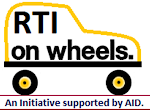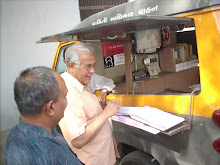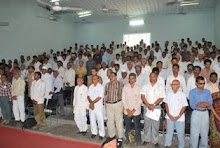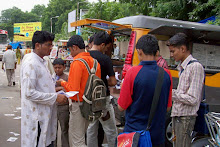National
Herald: New Delhi: Monday, September 02, 2019.
Narendra
Modi’s thumping victory, aided and ably monitored by his strategist-in-chief,
Amit Shah, in 2014, marked the beginning of major changes in the Indian media.
Unlike
most of its rivals, early in the new millennium, the BJP had understood the
importance of India’s language media, in particular the Hindi media and the
nascent social media for winning friends and influencing people in the vast
Hindi belt. It had also shrewdly sized up the well-networked oligarchies that
our major media corporations had become, and seen how they used their media
businesses to advance various other businesses they owned.
In
the following period, these owners were systematically charmed or coerced
through the vast resources governments have, into getting their media platforms
to vociferously support the BJP and Modi’s candidature for prime ministership
for a second term.
It
was also during 2014-19 that cheap smartphones and low initial mobile tariff
rates got available to Indians. Reliance launched a near free introductory
period for 4G phones; other service providers in a highly competitive market
followed. This led to a 65 per cent growth in multiple media with 500 million
users.
Then
Facebook (with 294 million Indian accounts already in existence) acquired the
popular messaging service WhatsApp adding 200 million more users.
With
Reliance launching its 4G telecom services, internet penetration grew beyond
all expectations and all major publishing houses jostled to launch e-papers and
digital news platforms. With media owners more or less tamed, the government
then began to craft a whole new template for interaction between the media and
the government.
Perhaps
taking a cue from the US President Donald Trump, Modi began to mock his media
critics in all his public meetings, thus effectively delegitimising a large
number of seasoned liberal and secular journalists as untrustworthy.
He
also used and continues to use social media services like Twitter copiously
along with his influential political friends. Their offices follow and monitor
both his supporters and critics in the social media carefully.
The
near-delegitimised media has, of late, been forced to pick PMO-related news
more often than not, from the digital sites or his monthly programme on All
India Radio, Mann ki Baat.
But
in this programme, he talks mostly on non-political subjects: building toilets,
getting daughters to school, helping women with household chores and more
recently the need to conserve wildlife and the planet.
According
to the information available on his site in August 2019, Modi has 49.5 million
followers on Twitter. And his personal account and Modi Mobile App also show a
further 2.2 million followers.
With
the owners complicit, editors ordered to be compliant and the professional
media denied direct interaction with the Prime Minister, the government’s
previous day-to-day engagement with the media has been drastically pruned and
reshaped in the last five years.
The
demonisation of the liberal secular media was accompanied by a slow and
inexplicable ouster of well-known editors and media hands like Bobby Ghosh
(Hindustan Times), Punya Prasoon Vajpeyi and Suparna Singh (both TV) and the
rise in the number of embedded journalists and regular participants on TV
panels.
A
spate of obituaries followed the recent death of a powerful former minister in
which at least two prominent media personalities virtually confessed that they
took their orders directly from the minister each morning as they were creating
their news flow charts.
Obviously,
active censorship is no longer needed except for the really stubborn ones who
still quote the Constitution-given freedom of expression in defence of their
profession. The lure of copious amounts of advertising money available through the
DAVP may not have attracted the earlier breed of editors and owners. But times
have changed.
Today
in the mainstream media, the board rooms are full of venture capitalists and
entrepreneurs who care more for bottom lines than headlines. Media laws regarding
multimedia ownership and responsibility still remain fragmented and largely
incoherent. And this has allowed the formation of a few large multimedia
corporations that network closely with each other and are largely protective of
the government’s interests.
Small
wonder then that, according to ‘Reporters Without Borders’, in the field of
freedom of press, India, that stood 80th out of 139 countries, today stands at
140 (out of 180 countries), even below violence-ravaged Sudan and Afghanistan.
Not
only the owners (in many cases also wearing editorial hats) but even the Press
Council of India (PCI), a quasi-judicial, statutory autonomous body created to
protect free and independent journalism, chose to oppose Kashmir Times editor
Anuradha Bhasin’s petition pending in the apex court, before it was forced to
change its stance in the face of scathing criticism.
Its
head issued a statement supporting the government’s stand of totally
restricting the media in Jammu and Kashmir ‘in the interest of the integrity
and sovereignty of the nation’.
The
venerable English daily, The Hindu, described this stand as, “brazenly contrary
to its mandate and purpose”. The editorial reminded the nation that the PCI had
supported the Punjab Press in the 90s during the turbulent times of terrorism,
and had also chastised communal bias in writing of several local papers.
At
least 11 of the 22 members of the PCI reportedly demanded an explanation as the
PCI chairman’s unilateral move was strangely not even mentioned at the last PCI
meeting on August 22. A few members were learnt to have explored the option of
filing petitions to counter the PCI chairman’s unilateral decision that
violates the Council’s basic principle of consensual decisions.
To
reprimand those who will still not comply with informal orders on
self-censorship, a few colonial era laws are shockingly being used.
Mahatma
Gandhi, after being released from Jail, had called for the people of India to
rise against the law which in his words, “...was established by the naked
sword, kept ready to descend on us at will of the arbitrary rulers...”
But
the same colonial law (Section 124A of the IPC) that the British had used
against Mohandas Karamchand Gandhi in 1922 (for his writings critical of the
colonial government in his paper Young India), was used a century later (2019)
to file a criminal case in Bihar, against a group of some 50 highly respected
artists and intellectuals. The charge is that the open letter they had written
to the PM recently was violative of various sections of IPC like 124A
(sedition), 153B (assertion prejudicial to national integration), 290 (public
nuisance), 297 (trespass to wound religious feelings) and last but not the
least, 504 (intentional insult). The cases of defamation were earlier filed as
civil cases, now the trend is to file them under the criminal category which is
infinitely more serious and involves prolonged litigation.
Mindful
of the changing media ecology and the importance of social media, the Election
Commission of India (ECI) created a special committee in 2018, to identify gaps
in the regulations regarding election campaigning and suggest measures to plug
them.
The
committee examined various aspects of the (1951) Representation of the People
Act (revised in 1996), in particular Section 126 of Tte Act, that defines a 48
hour “silence period” prior to voting which bans all political campaigning. The
committee consulted various arms of the media including the all-important
Internet and Mobile Association of India (IAMAI) and major social media
companies: Facebook, WhatsApp, Twitter and Google. The report was submitted to
the ECI in January 2019, prior to the Model Code of Conduct that came into
force in March. But the contents of the report were not known until after the
election results had been announced. It was an RTI filed by a Hyderabad-based
independent researcher and analyst, that managed to get this report out in the
public in July, 2019.
In
the absence of clear legal framework during the 2019 General Election, a
highly-polarised political debate found its way into the public domain via the
“intermediary media” because it was argued that digital platforms were not
covered by Section 126 of the RPI Act. So, digital platforms could go on
streaming news, after they had informed the users that they were not to upload
illegal and harmful content. If informed of any such content, the digital
intermediaries said, the platform would remove it within 36 hours.
The
election period saw many run-ins between the intermediaries and the government.
In April, even a number of civil society organisations issued a statement that
found fault with the way the ECI was trying to combat the twin dangers of
misinformation and unaccounted mass campaigning through social media.
Their
letter also appealed to political parties to monitor compliance of money spent
by political candidates on media campaigning through IT cells specially set up
by some political parties. But since there was no clear regulatory framework, a
timely regulation of online content remained impossible to implement.
On
the eve of elections, a Hindi news channel by the name of NaMo was launched on
YouTube, which was seen to telecast Modi’s speeches and electoral rallies
nonstop. Later, it even appeared on Tata Sky, a DTH platform, and disappeared
without a trace when the electoral process ended. The Tata Sky CEO has since
described it as a free special services channel. And that was the end of the matter.
From
science to politics, great inventions begin with one pointed question. In 1919,
Gandhi had asked a question: “How can India gain Swaraj?” But simultaneously,
he had also asked a second one: “How can I create a method and a format within
which Indians can do it ethically?” A century later, Mark Zuckerberg asked a
vital question: “How can the Net create infinite connectivity?” We are yet to
hear the second question from him.
In
2019, what is striking about our system is that, just as Zuckerberg used the
word ‘connect’ to justify the methodology and the format, the system uses the
term ‘national security’ to justify what is being done across the media. It is
as if the idea of national security itself were sacred and beyond ethical
questioning.














































































